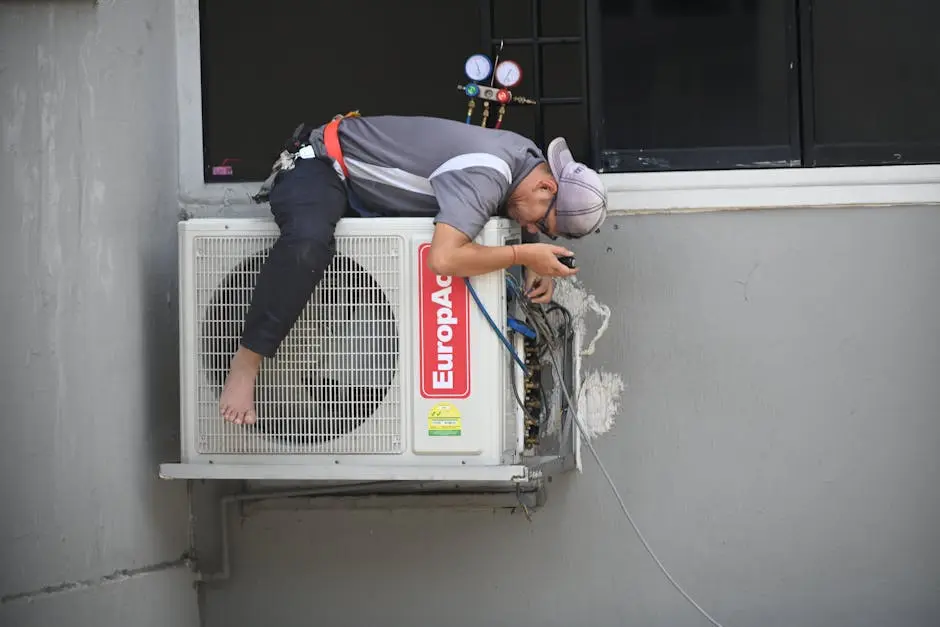When the heat of summer hits, the last thing you want is for your air conditioning unit to let you down. Whether you’re a DIY enthusiast or prefer to leave it to the pros, knowing a few essentials can make a world of difference. Below are some friendly and straightforward tips to ensure your AC repair process goes smoothly.
1. Recognize the Signs of Trouble
Understanding the early signs of AC issues can save you time and money. Look for unusual noises or inconsistent cooling as starting points.
Moreover, watch for increased energy costs; if your bill spikes unexpectedly, it might indicate your AC is overworking. Spotting these troubles early can prevent larger repair bills later on.
Don’t forget about the smell! A strange, musty odor can signal mold buildup or other serious issues that require immediate attention before they escalate further.
2. Change Your Filters Regularly
Dirty filters can hinder airflow and efficiency. Regularly changing or cleaning your filters is an easy fix that helps maintain your system.
Not only does this simple act improve airflow, but it also extends the lifespan of your AC unit. Most experts recommend checking filters at least once a month.
Plus, you will notice the difference in your indoor air quality! A clean filter traps dust and allergens, making your home a healthier space.
3. Check the Thermostat Settings
Always ensure that your thermostat is set correctly. Sometimes it’s as simple as adjusting settings to resolve an issue.
Make sure to consider a programmable thermostat, which can automatically adjust to your schedule. This not only aids efficiency but also gives you peace of mind knowing your system is working efficiently.
Just remember—sometimes the simplest solution is the one you’ll overlook, so don’t hesitate to double-check!
4. Inspect the Outdoor Unit
Keeping the outdoor unit clear of debris like leaves and dirt can help prevent unnecessary strain on your system.
Take a moment to inspect the area around your unit regularly. Ideally, you want at least two feet of clearance on all sides to allow proper airflow.
Remember, your outdoor unit is just as essential as the indoor unit, and a bit of proactive maintenance can go a long way in avoiding costly repairs later.
5. Listen for Unusual Sounds
If your AC is making strange sounds, it’s often a sign that something isn’t functioning properly. Pay attention to these noises—they can hint at what needs repair.
For instance, you might hear a hissing sound indicating a refrigerant leak, or a clanging noise that can suggest something is loose. Ignoring these clues might lead to bigger problems down the line.
So, keep your ears open! A little vigilance can catch problems early and save you from a more significant overhaul.
6. Seal Ducts and Insulation Gaps
Ensure that your ducts are properly sealed. Gaps and leaks can lead to inefficiency and increased costs.
Conduct a quick check for any visible cracks or gaps, and consider using mastic sealant or metal tape to seal them up. This simple step can dramatically turn down inefficiencies in your system.
This not only enhances your AC’s performance but can also improve overall energy efficiency, leading to lower bills.
7. Utilize Regular Maintenance Checks
Scheduling routine maintenance with a professional can catch issues before they escalate and keep your system running efficiently.
Most experts recommend two checks a year—once before summer and once before winter. This proactive approach ensures your AC is prepared for peak demands and can highlight any potential issues.
Think of it as a health checkup for your AC. The better you care for it, the longer and better it will serve you.
8. Know When to Call a Professional
Some issues are best left to professionals. Knowing your limits can help keep you and your AC safe.
For instance, if you notice a refrigerant leak or your system is blowing warm air despite normal settings, these are red flags that a trained technician should handle.
Calling in an expert may seem like an extra step, but it can prevent damage and ensure the problem gets resolved correctly.
9. Understand Your Warranty
Familiarize yourself with your warranty to understand what repairs and services are covered before diving into DIY fixes.
Most warranties might require professional servicing to maintain validity, so knowing your terms can save you a headache later on.
Plus, distinguishing between what you can handle and what requires a pro can save you both time and money.
10. Use the Right Tools
Having the appropriate tools on hand can make all the difference when tackling minor repairs yourself.
Investing in a good set of screwdrivers, gauges, and wrenches can empower you to handle minor fixes when they arise.
Remember, though, that having the knowledge to use these tools is just as important as the tools themselves!
11. Stay Informed About Local Regulations
Be aware of any local regulations regarding HVAC repairs and upgrades to ensure compliance—a common oversight!
Different regions may have unique codes, especially for refrigerant management and disposal, making it crucial to stay informed.
Not only does this knowledge help you stay compliant, but it can also protect your investment in your system.
12. Plan for Seasonal Changes
Prepare your AC for seasonal changes by scheduling off-season maintenance, which can enhance longevity and performance.
For example, consider a thorough check before winter, when your unit may be primarily inactive. Maintaining your unit reduces wear and ensures it’s ready to tackle the heat when summer rolls around again.
By planning ahead, you ensure that your air conditioning system stays in peak condition year-round.



